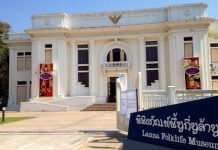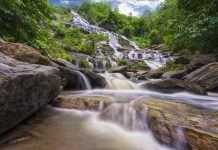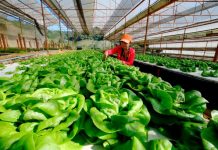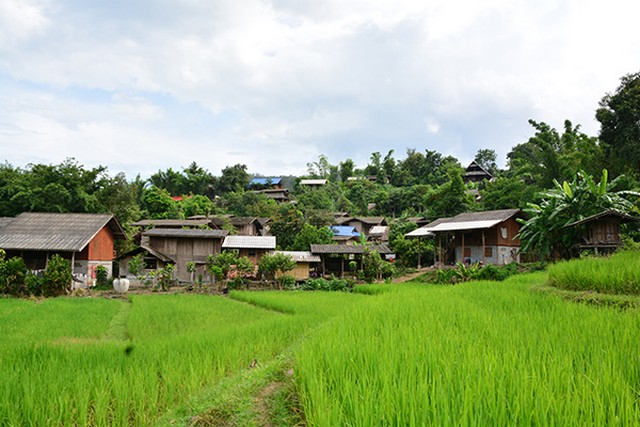
Immerse yourself in the natural beauty of Mae Sapok Royal Project Development Center
Ban Mae Sapok is a Karen community one of the hill-tribe people resides in Chiang Mai. Formerly, the tribesmen lived their lives by shifting cultivation that comes with reclaim of the forest continually, and some of the hunter-gatherer. The life of the citizen here before the arrival of the royal project in overall was difficult. The community of Mae Sapok was aided by the Royal Project foundation by setting up “Mae Sapok Royal Project Development Center” to support the living of residents here.
Background of Mae Sapok Royal Project
Mae Sapok Royal Project Development Center locates at Ban Mae Sapok, Mae Win sub-district, Mae Wang in Chiang Mai province. The center was settled in 1983 in order to make a better life for the residents by serving as the research center of any potential plants to replace the opium planting. Moreover, the plan aims to build good conscience for the villagers to preserve and protect the forest which is the source of water that nurtures the property covers over 4 villages.
Mae Sapok Royal Project is a medium development center that situates at the backward of Doi Inthanon with cold climate in the winter and pleasant atmosphere in the summer with its average temperature at 18 degree Celsius.
What the Royal Project do at Mae Sapok Center
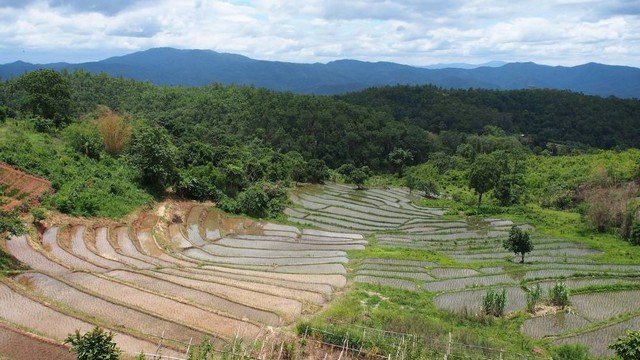
Research and Demonstration
Planting: The center serves as a research center to test the leafy vegetables to introduce to the farmers including to know-how in cultivation effectiveness, season, and demand of the market. There are 6 demonstration farms for vegetable planting.
Fruits: The demonstration of the introduced fruits especially the temperature ones like avocado to study the production process and pruning and proper period for fertilization
Career Promotion and Development: To develop and enhance the local farmers to plan and create the task timeframe and cluster them into group based on their skill.
Promote the farmer in vegetable planting
- The farmers in North Mae Sapok Village (Ban Mae Sapok Nue) with about 12,800 sqm of land with 6 kinds of vegetables; Chinese Kale, Bitter Gourd Green, Bitter Gourd White, Sweet Basil, Celery, and Italian Parsley.
- The farmers in South Mae Sapok Village (Ban Mae Sapok Tai) and Huay Jak Krai Village to grow 5 kinds of vegetables are Chinese Kale, Bitter Gourd Green, Bitter Gourd White, Pakchoi, and Lemon Balm.
- The farmers in Ban Huay Khao Leep and Ban Khun Puay to grow 13 kinds of vegetables; Radish, Turnips, Pakchoi, Baby Pakchoi, Cos Lettuce, Baby Cos, Kohlrabi Green, Zucchini, Fennel, Chinese Mustard, French Bean, Sugar Snap Pea, Carrot, and Organic Green.
Flowers: The center introduces 5 kinds of flowers and Cut Foliage to the farmers who are Philodendron Xanadu, Monstera, Philodendron Goeldii, Flamingo Flower, and Anthurium
Better quality of life
In 2010, the report showed that the project at Mae Sapok is good in its implementation and the residents have good revenue together with the better quality of life. Besides the villagers gain more income from this the royal project also build the good conscience to decrease the chemical cultivation with the information and demonstration to show the hazard from the chemical using in agriculture. Then, the center provides the know-how to alternative plantings such as GAP Planting, Organic Farming, and Global GAP Farming. And development in how to manage the productivity after harvest to improve the quality with standard and to reduce waste of the product, as well.
Last but not least, it expands the organic farming continuously in partially the area of Ban Huay Khao Leep which promoted to be a learning center for organic agriculture together with the natural resource preservation. Luckily, some of the residents have learned and tried to understand the way of life in accordance to HM King Bhumiphol’s Sufficiency economy Philosophy, and they have continued to do it for the sustainable living in the future, too.
Nowadays, Mae Sapok Royal Project has its networking farmers who have joined in the project about 450 families. The farmers do the Integrated Farming System including green vegetables and sesame which provide the good outcome. The objective to promote the villagers to grow the sesame due to the royal project would like to reduce the corn planting that can cause to the Soil degradation. And sesame is the high demand of the market with reasonable price, as well.
Sightseeing in Mae Sapok Royal Project
The visitors who come to Mae Sapok Royal Project Development Center, besides the demonstration farming the site itself that is beautiful and relaxing for one that seeks for the nature call, indeed. And there are lots of other sightseeing around the area of the royal project that the visitors can immerse with the natural beauty of the environment and the rustic way of life of the villagers.
Agritourism:
- Demonstration Farming of seasonal vegetables; Baby Bokchoi, Red Oak Leaf, Green Oak Leaf, Baby Cos Lettuce, Red Coral, Rocket Salad, Lettuce Butterhead, and Cos Lettuce, for example.
- Organic vegetable and herb – Zucchini, Chinese Kale, Shitake Mushroom, Bitter Gourd White, etc.
- Discover to the beauty of Karen’s terrace farm.
Cultural Tourism:
- Karen’s New Year Festival that the villagers will set the celebration party at the village and they will get the traditional costume to join the party.
- Watch the textile weaving of Karen that is very beautiful.
Natural Attractions:
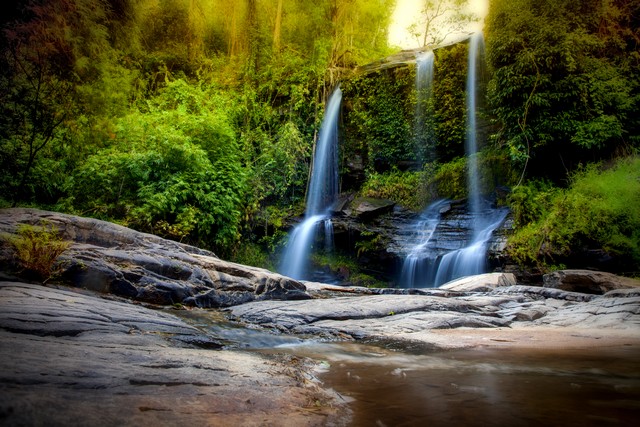
Mae Sapok Waterfall or Tham Nam Maan Fa, a natural attraction that situates in the area of Ban Mae Sapok, Mae Wang in Chiang Mai. The beautiful waterfall which is so-called “the hidden gem” is not too far from the royal project site and about 8 km from Mae Win Subdistrict Administrative Organization (SAO)
Mae Sapok is accessible by foot along the path leading to the second level of the fall. However, the water allows the visitor to climb up to the higher space only during the draught season (or anytime that the water is not too much) since it is dangerous in the float season with a tough road. At the beginning of the way to ascend to the waterfall is small signage to guide the way to the visitor and not far from there is an overhanging rock reaching out as a shelter for us from the water that descending flow from the high cliff.
On the way, you will meet the Buddha statue in the attitude of Spreading Naga and a figure of a hermit. And traditionally, Thai people would pay respect for the sacred objects for luck and protection from any evil, so that it is a good thing to do for any tourist either Thai and foreigners before entering to the waterfall.
*** The walkway beneath the waterfall is steep and narrow, so it is not recommended for the children and seniority***
There are other natural sites to visit in Mae Sapok such as Mae Wang Waterfall, Pha Mon Waterfall, etc. and the road to go is quite convenient, also Mae Sapok Elephant Camp and Bamboo rafting journey along Mae Wang stream at Ban Sop Win.
A Day Tour at Mae Sapok Village
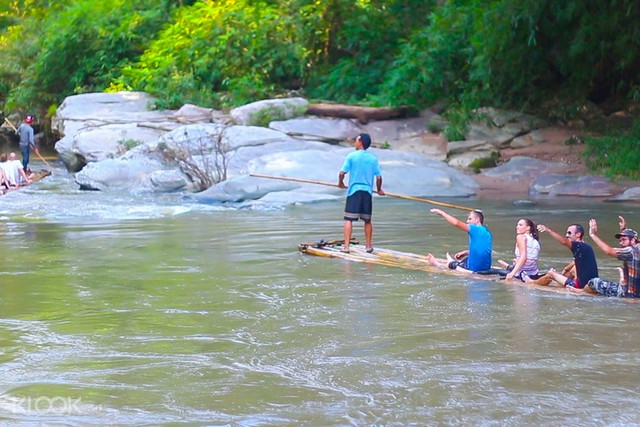
Mae Sapok Village where the place is part of Mae Sapok Royal Project Development Center administrative is an ideal destination for one who needs the rural escape to the site with relax and natural atmosphere and simple way of life.
After a night at any accommodation around the area of the royal project, you can start a day trip at Mae Sapok Village in the early morning for sunrise hunting at “Pak Sod Coffee Plantation” by Pho Luang Daeng (Pho Luang in the north means a village chief). The farm nestles in the hillside next to the Mae Sapok Child Development Center. The owner is a kind uncle that is very friendly. If you have time, have a seat and have some conversation with him then you would get lots of good ideas regarding the natural reservation.
Next, you can stop by at Mae Sapok Child Development Center that you can spend the moment to play with those children. Sometimes, the innocence of the children can clear our mind, isn’t it?
Then, you may go to check in at “Mae Sapok Nue Waterfall” (North Mae Sapok Waterfall) that stands next to Mae Sapok Nue Village. The water here is very appealing for some splash; however, it is not recommended for the children because it’s quite a strong stream. Moreover, if you someone who loves to collect beautiful textile, there is a local textile shop that you can shop nice and beautiful handmade textile with the price is not too expensive, too.
Gift and Souvenir from Mae Sapok Royal Project

Inside the royal project area next to the parking is “Mae Sapok Cooperative Shop” which is a store to distribute the products produced under the royal project. The goods here included seasonal products from farms and handicraft by the villagers, soft drinks, snacks, and noodle. Especially the noodle that uses the vegetables from the royal project farm that ensure for the taste and quality and the most important thing is it is not high price.
Accommodation and Facilities
Mae Sapok Royal Project offers the accommodation service with a 4-room cottage style accommodation for 6-8 guests. And a camping ground with the tent and camping facility for rent and a restaurant.
Apart from that, the tourist can stay in the accommodation around the area of the royal project that provided whether homestay and resort style. The homestay accommodation mostly is lied along the route of Mae Sapok Nue Waterfall. So, you can immerse with the rustic way of life environed by the verdant nature. Alternatively, the resort style nestles in the top of the mountain called “Chom Chan”. And the price for both of accommodation is not too expensive, particularly the homestay that is very cheap.
Journey to Mae Sapok Royal Project
Mae Sapok Royal Project Development Center is about 68 km from the town of Chiang Mai. You travel on the highway number 108 (Chiang Mai – Hod) and when you arrive at Amphoe San Pa Tong then make a right turn to enter to the road number 1013. Then you keep the drive in about 38 km you will meet the left fork to go to Ban Mae Sapok Nue and drive more 500 m you will reach the destination.
***Mae Sapok, Royal Project Development Center, is before the site of Khun Wang Royal Project where is a location to experience the Himalaya Cherry Blossom.

